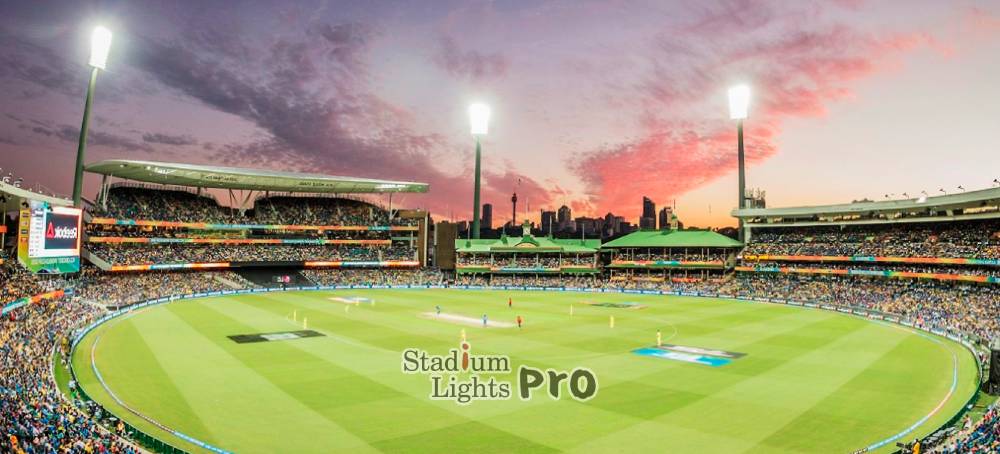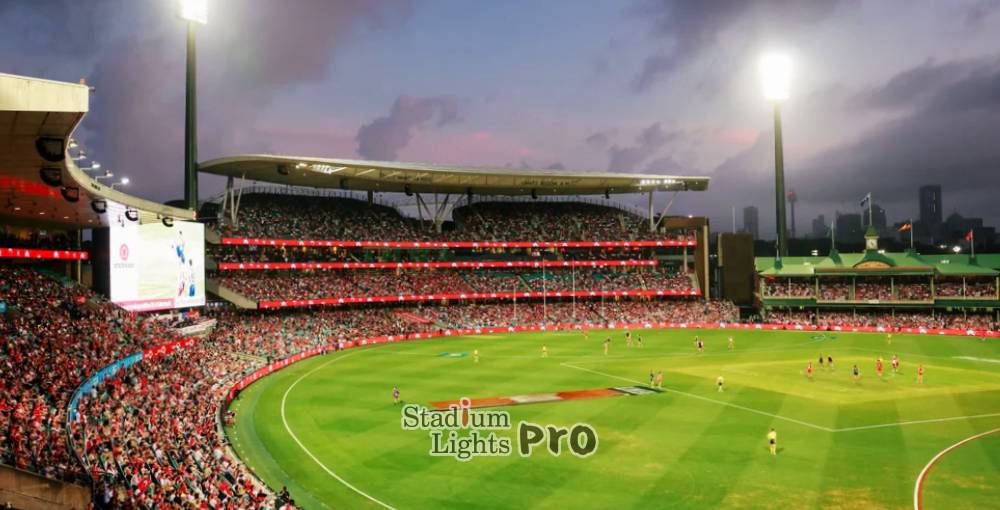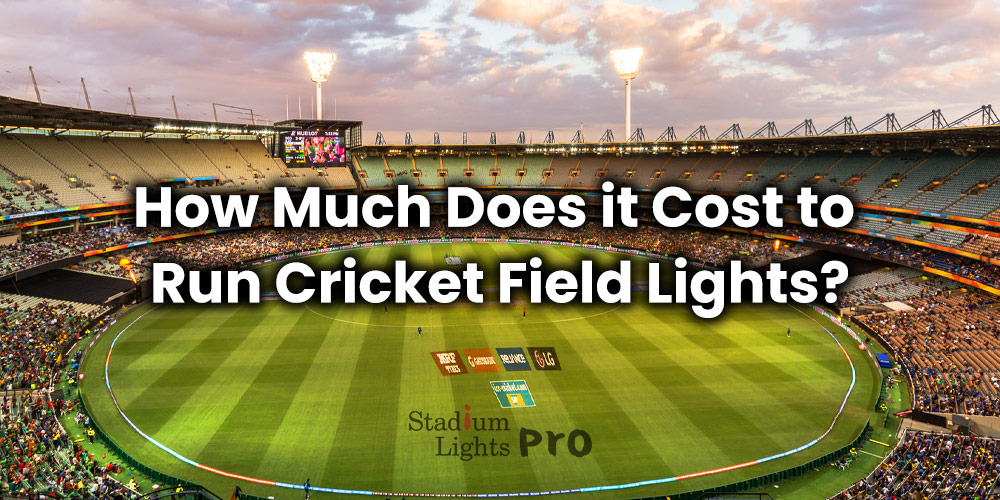To facilitate day-night matches and extend play into the evening, cricket stadiums require efficient lighting systems. However, operating cricket field lights comes with associated costs that need to be considered. We will delve into the factors affecting the expenses and provide a detailed calculation example for a cricket field, based on some reasonable assumptions.
Table of Contents
ToggleFactors affecting the running cost of cricket field lights

Energy consumption
The primary cost associated with running cricket field lights is the energy consumption. The energy required depends on the number of floodlights, their wattage, and the duration of usage. Stadiums with higher light intensity may have more powerful floodlights, leading to increased electricity consumption.
Operating hours
The number of hours the lights are used during each match affects the cost. Longer matches or tournaments may require lights to be in operation for several hours or even throughout the night. What is more, practice sessions and warm-up matches can also contribute to the overall usage.
Type of cricket field lighting
The type of lighting technology employed can significantly impact the cost. Traditional metal halide floodlights have been widely used, but modern LED floodlights are becoming more popular due to their energy efficiency and longer lifespan. LED lights consume less electricity, resulting in reduced operating costs.
Electricity tariffs
The prevailing electricity tariffs set by the utility provider in a particular region affect the overall expense. Tariffs can vary based on factors such as the time of usage, demand charges, and commercial rates. We could consider these factors when calculating the cost of running cricket field lights.
Calculation of lighting running cost for a cricket field
Let’s assume we have a recreational cricket field with the following specifications:
- Total floodlights: 8
- Wattage per floodlight: 1500 watts
- Average usage per match: 6 hours
- Number of matches per year: 20
- Electricity tariff: $0.15 per kilowatt-hour (kWh)
Determine the total wattage of the lights
Total wattage
= Number of floodlights × Wattage per floodlight
= 8 × 1500 = 12,000 watts
Calculate the energy consumption per match
Energy consumption per match
= Total wattage × Average usage per match
= 12,000 watts × 6 hours = 72,000 watt-hours (Wh)
Convert watt-hours to kilowatt-hours
Energy consumption per match (kWh)
= Energy consumption per match (Wh) ÷ 1000
= 72,000 Wh ÷ 1000 = 72 kWh
Calculate the annual energy consumption
Annual energy consumption
= Energy consumption per match × Number of matches per year
= 72 kWh × 20 = 1440 kWh
Calculate the annual cost
Annual cost
= Annual energy consumption × Electricity tariff
= 1440 kWh × $0.15/kWh = $216
Therefore, the estimated annual cost of running the cricket field lights in this example is $216.

How to reduce the running cost of cricket stadium lighting?
To reduce the running costs of cricket field lighting, implementing energy-efficient measures such as LED replacement can be highly beneficial. Here are some ways to minimize the expenses:
LED lighting
LED (Light Emitting Diode) technology is more energy-efficient compared to traditional lighting options like metal halide lamps. LED floodlights consume significantly less electricity while providing high-quality illumination. By replacing existing lights with LED fixtures, you can achieve substantial energy savings and reduce operating costs.
Suggested reading: Type of lights used in the cricket field
Lighting control systems
Install lighting control systems that allow for precise management of the lighting levels. This includes the ability to dim or switch off lights when they are not required at full brightness. Utilizing motion sensors and timers can help automate the control of lighting, ensuring lights are only active when needed, reducing unnecessary energy consumption.
Zoning and targeted lighting
Optimize lighting configurations by creating lighting zones that match the specific requirements of different areas of the cricket field. For instance, you can focus brighter lights on the playing area and reduce lighting levels in spectator areas or non-playing sections. By targeting the lighting where it’s needed the most, you can conserve energy and minimize costs.
Regular maintenance
Implement a proactive maintenance schedule for lighting fixtures to ensure optimal performance. Clean the fixtures regularly to remove dust and debris that can reduce their efficiency. Furthermore, promptly replace any faulty or damaged lights to prevent energy wastage and maintain consistent lighting levels.
Energy management practices
Encourage energy management practices within the stadium by educating staff and players about the importance of turning off lights when not in use. Promote a culture of energy conservation and raise awareness about the impact of energy-saving measures.
Lighting upgrades
Evaluate the lighting design and consider upgrading fixtures to newer, more efficient models. Keep up with advancements in lighting technology to ensure you are using the most energy-efficient options available in the market.
Energy audits
Conduct regular energy audits to identify areas of improvement and assess the efficiency of lighting systems. An energy audit can help pinpoint opportunities for further energy savings and guide decision-making on cost-effective upgrades.
Conclusion
The cost of running cricket field lights depends on various factors, including energy consumption, operating hours, lighting technology, and electricity tariffs. By considering these factors and performing a detailed calculation, stadium owners and event organizers can estimate the expenses associated with lighting up a cricket pitch. It is worth exploring energy-efficient lighting options, such as LED floodlights, to reduce operating costs and minimize the environmental impact in the long run.
To explore more information and calculate the running cost of lighting for your specific cricket field, we encourage you to contact us. Our team of experts can provide personalized assistance and guidance tailored to your stadium’s requirements. By considering factors such as the number of floodlights, wattage, operating hours, and electricity tariffs specific to your location, we can help you estimate the running cost accurately. Don’t hesitate to reach out to us and take a step towards optimizing your cricket field’s lighting efficiency and reducing operational expenses. Contact us today for a comprehensive analysis and energy-saving solutions.

